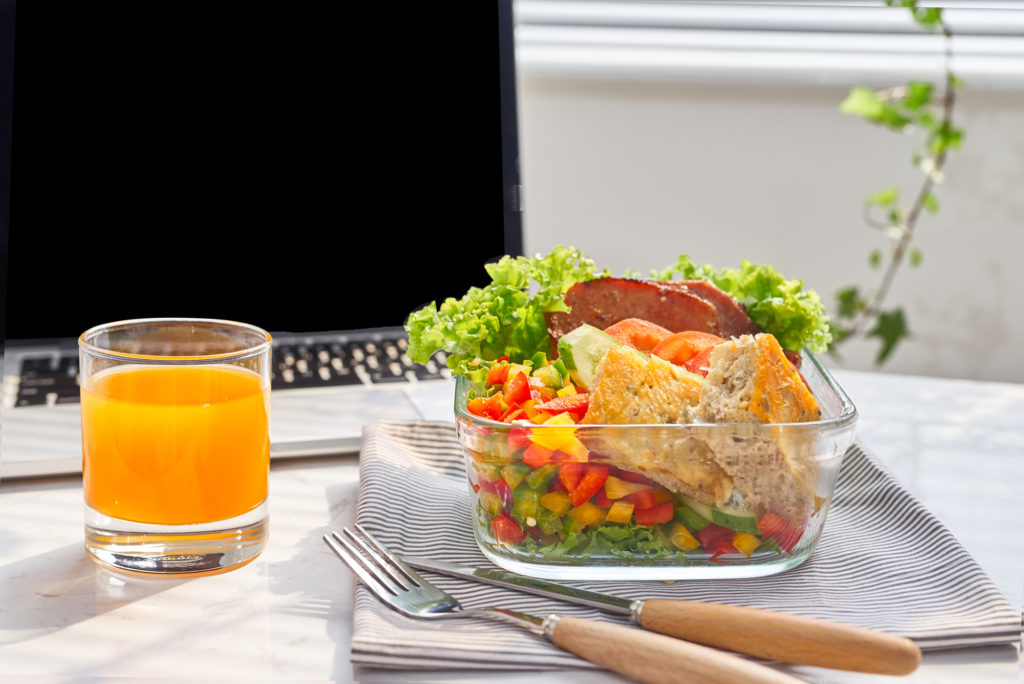 You gotta eat, right? But when it comes to meals, what’s business and what’s personal? If it’s personal, nothing is deductible, but if it’s a business meal, how much is deductible? The federal income tax rules are very confusing and were made more so by a temporary change under the American Rescue Plan Act.
You gotta eat, right? But when it comes to meals, what’s business and what’s personal? If it’s personal, nothing is deductible, but if it’s a business meal, how much is deductible? The federal income tax rules are very confusing and were made more so by a temporary change under the American Rescue Plan Act.
Here are 10 things to help you navigate the complexity of tax rules.
1. Eating alone is a business deduction only in certain circumstances.
When you pick up coffee and a bagel on the way to the office or take a lunch break at the neighborhood diner or order take-in, you can’t deduct the cost. While you likely wouldn’t have incurred the expense if you weren’t working, it’s still a nondeductible personal expense. Your meal costs are deductible (see #2 and #3 for how much) only if you are:
- Traveling away from home on business (e.g., on a business trip).
- On a temporary work assignment (e.g., a self-employed person working on a three-week project out of town).
2. Wining and dining business customers usually is 50% deductible.
If you take a customer to breakfast, lunch, or dinner, or even buy food and beverages at an entertainment event (e.g., a ballgame), you can deduct half the cost for you and your customer…unless you meet #3.
3. Restaurant food and beverages are temporarily 100% deductible.
For 2021 and 2022, if you consume food and beverages at a restaurant that would normally be 50% deductible, you can write off the entire cost. The IRS provided guidance on the term “restaurant” for this purpose. The term “restaurant” means a business that prepares and sells food or beverages to retail customers for immediate consumption, regardless of whether the food or beverages are consumed on the business’s premises. It does not include a business that primarily sells pre-packaged food or beverages not for immediate consumption, such as a grocery store; specialty food store; beer, wine, or liquor store; drug store; convenience store; newsstand; or a vending machine or kiosk.
4. No deduction is allowed for meals that are lavish or extravagant.
There’s no dollar amount for determining this; what is lavish and extravagant depends on the facts and circumstances. A business lunch for a Fortune 500 CEO probably is a little different from one hosted by a small business owner.
5. All deductions must be properly substantiated.
Special substantiation rules apply to business meals. Details are in IRS Publication 463. Without such documentation, you usually are barred from any deduction.
6. Standard meal allowances are subject to applicable limitations.
You may rely on a standard meal allowance to simplify substantiating the cost when traveling on business. There’s the GSA per diem rates and the IRS high-low substantiation rates. However, these rates are still subject to the 50% rate (100% rate in 2021 and 2022 if applicable).
7. Eating facilities have special rules.
The cost of an employer-operated eating facility (e.g., company cafeteria) or meals provided for the convenience of the employer (e.g., food to a restaurant’s wait-staff) is only 50% deductible. An employer may not treat either of these situations as a “restaurant” for purposes of the 100% deduction in 2021 and 2022.
8. Certain employee benefits may be fully or partially deductible.
Employers may provide certain food benefits to employees, which may be 100% or 50% deductible:
- The cost of company recreational, social, or similar activities (e.g., holiday party or summer picnic) is fully deductible.
- Break room costs (e.g., snacks and beverages) are 50% deductible.
- Occasional supper money to enable an employee to work late is 50% deductible.
- Meals provided to employees during company meetings are 50% deductible.
Note: After 2025, no deduction will be allowed for snacks and beverages, occasional supper money, or for meals during company meetings.
9. Meals that are advertising are fully deductible.
The expense of distributing free food and beverages to the general public as means of advertising or promoting goodwill in the community is not subject to the 50% limit.
10. No deduction for taking turns paying.
The IRS has made it clear that if a group of business acquaintances takes turns picking up each others’ meal checks primarily for personal reasons, without regard to whether any business purposes are served, no member of the group can deduct any part of the expense. Just because two people work together and lunch together doesn’t make the meal a deductible expense.
Final thought
Gone are the days of the fully deductible “3-martini lunch,” a practice that was prevalent in the mid-1900’s. Who has the time now for leisurely luncheons or even meeting in person?
The Tax Reform Act of 1986 dropped what had been a 100% deduction for meal costs to 80%. The cap was lowered to 50% by the Revenue Reconciliation Act of 1993. What will happen after the temporary 100% limit for restaurant meals expires at the end of 2022? Who knows?


